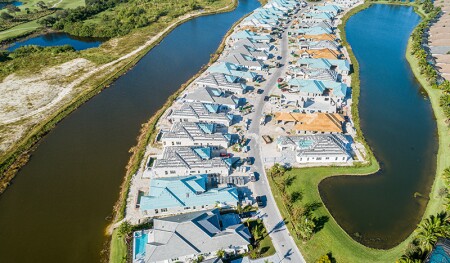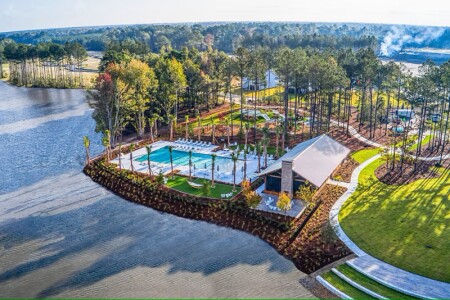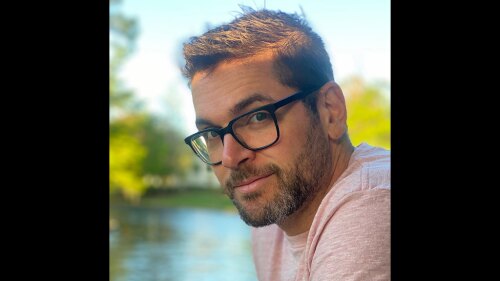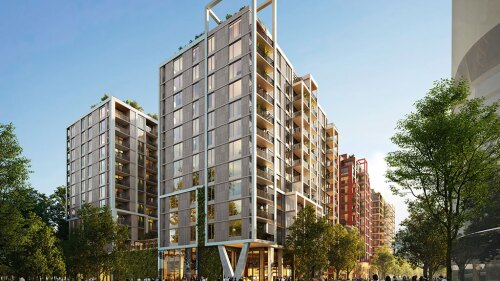Along U.S. coastlines prone to hurricanes, developers have largely gotten the message from Mother Nature and the insurance industry: Harden your buildings or face future peril. The result is communities located and engineered in hopes of withstanding windstorms and rising waters.
A recent success story is Florida’s Babcock Ranch. The master-planned community straddling Charlotte and Lee counties withstood hours of sustained winds over 100 miles per hour (161 kph) when Hurricane Ian made landfall in September 2022.
The damage was so minimal that inspectors from the Federal Emergency Management Agency determined that the storm had missed the 17,280-acre (6,993 ha) planned development. Don’t associate the minimal impact with luck. Located miles from the coast, the community has an elevation that averages 30 feet (9.14 m), with many structures feet above streets that help channel rainwater toward natural and manmade retention ponds and flow ways.
Working closely with utility Florida Power and Light, a large solar farm, batteries, and transfer stations connected by buried power lines helped ensure the community’s almost 5,000 residents never lost power. With homes and other buildings left mostly unscathed, residents were able to remain home after the storm, and the community welcomed storm refugees to its shelters.
“Storm safety was absolutely at the top of our list,” says Syd Kitson, the former professional football player-turned-CEO of Kitson and Partners, developer of Babcock Ranch. “How could we convince people they could shelter in place? We knew if we did it right from the beginning, we could prove they could.”
Florida’s resilience continues to be a huge and growing practical and financial priority as existing buildings age and population growth across the state invites continued losses. Strategic planning focused on strength and durability is helping mitigate wind and flood damage and serving as lessons to other, more mature communities planning a more resilient future.
The state has near- and long-term interest in holding back mother nature. As with other states, Florida is planning for sea-level rise forecast to hit 17 inches (43 cm) by 2040, according to The Business Case for Resilience in Southeast Florida, a report from the Southeast Florida Regional Climate Change Compact, Urban Land Institute, and other partners.
The stakes are high—and growing. Topping the list of costliest storms to hit Florida, in 2022 dollars, is Ian, at $84 billion, according to the U.S. National Oceanic and Atmospheric Administration. That was followed by Irma in 2017 ($59.5 billion), Andrew in 1992 ($55.9 billion), Michael in 2018 ($29 billion) and Wilma in 2005 ($27.9 billion). Florida is hardly alone. The costliest storms to hit the U.S. include Hurricane Katrina in 2005 ($186.3 billion), Harvey in 2017 ($148.8 billion), Maria in 2017 ($107.1 billion), Ian, and Sandy in 2012 ($81.9 billion).
Learning from the Past
Some 80 percent of Florida’s 22 million residents live within 10 miles (16.1 km) of the coast, said Mark Friedlander, a spokesman for the Insurance Information Institute. In the aftermath of 1992 Hurricane Andrew, Florida strengthened its building codes, which subsequently became a model for other states. These also helped drive laws requiring mandatory insurance premium discounts for hardening measures. Such regulations vary by state and range from 5 percent to 35 percent or more.
Structures at Babcock Ranch, including homes, commercial buildings, and the International Code Council-rated hurricane shelter, are designed to better withstand 160 mph winds (257.5 kmh). They have earned praise—and lower premiums—from insurance carriers.
Gulf Bay, another Southwest Florida developer, has completed 14 luxury properties along a 1.5-mile stretch of Gulf-front land within Pelican Bay. Hazard mitigation strategies include building above code, site selection, and stormwater management at the Mystique condominium development, which is built above grade and protected by mangroves and dunes, said Aubrey J. Ferrao, CEO, of the Gulf Bay Group of Companies. Another current project will be built three feet above FEMA-required elevation, he said.
“When put to the test, Gulf Bay’s approach has proven correct,” he said. “Our properties had nearly zero damage from Hurricane Ian.”
The positive results of hardening practices were clear in Southwest Florida, where newer homes built to or above Florida’s strict building code withstood storm winds better than those homes built before codes were strengthened following Hurricane Andrew, said John Meder, head of risk consulting and claims advocacy at national insurance brokerage Risk Strategies, based in Raleigh, North Carolina.
“It’s really been a testament to the newer construction standards and how they’re holding up better,” said Meder, whose home under construction along the North Carolina coast will have a metal roof and a structure anchored 15 feet into the ground. “When I look at resiliency, everything gets back to construction standards, planning, and how an entire community comes together to meet those standards. It really doesn’t happen by accident. You have to be thoughtful and plan accordingly.”
Florida code and municipal inspections require that steel is laid throughout the solid concrete foundation then rises through the concrete block and ties into the engineered roof trusses with hurricane straps, said Josh Graeve, division president of Pulte Homes Southwest Florida, which is building in both Babcock Ranch and nearby master-planned community Lakewood Ranch.
“The entire home is tied together from foundation to roof,” Graeve said.
Beyond Southwest Florida
Southwest Florida is not alone in such planning. Two master-planned communities from developer Raydient Places + Properties will rely on hardening to hold back natural forces. Its Wildlight community outside Jacksonville and Heartwood development outside Savannah both are about 10 miles from the Atlantic. Both adopted local architecture, like Wildlight’s use of Florida “low country” style, which fits the local aesthetic and historically has fared better in tropical events, said Chris Corr, president of Raydient Places and senior vice president for real estate development with parent Rayonier.
Both communities have higher elevations than the prevailing terrain, which can help prevent flooding. The developer also worked with area utilities, including Florida Power and Light in Jacksonville, to bury power lines to help reduce disruption.
It helps that those post-Andrew building codes have been effective, and the expertise of civil engineers, architects, and environmental land planners has flourished around the idea of resilient development.
But are resilient communities affordable or available to lower-income communities? Raydient’s homes in Wildlight and Heartwood range from over $300,000 to more than $800,000 and include a variety of home types. Following Ian, Pulte decided to make impact glass standard on every home it builds in Southwest Florida, Graeve said. It did not raise the base price of the home and instead has become a competitive advantage, he said.
Some banks, as well as the Inflation Reduction Act of 2022, offer loans, grants, and funding for hazard-resistant development and improvements. That’s not necessarily storm-focused “hardening,” said Jennifer L. Languell, founder and president of Trifecta Construction Solutions, which worked on Babcock Ranch’s planners—and rode out Ian in her home there. Success comes from a layered approach that protects buildings, infrastructure, and quality of life, she said.
“Resilient doesn’t have to be synonymous with unaffordable,” she said. Others built similar homes a few miles from Babcock but suffered greater damage. “Building in that infrastructure is a low-cost way to [incorporate] resilience readiness.”
Jeff Carney would like to see more development. As a professor at the University of Florida School of Architecture and former director of the Coastal Sustainability Studio at Louisiana State University, Carney believes sprawl must be replaced by master-planned development designed to withstand the growing perils of a changing climate.
Florida homes built since Andrew and the strengthened Florida Building Codes, especially those in greenfield developments where water management is planned, as opposed to piecemeal approaches found in urban infill development, fared better in Ian than those built before it. Deliberately higher elevations and construction at or exceeding building codes “make a huge difference.”
“These aren’t the 1950s platted subdivisions anymore,” he said. “It has to be more of a holistic approach.”
Still Selling
One might think images of storm surge and wind damage from Hurricane Ian would discourage prospective buyers. That’s not been the case. In the months following Ian, Babcock Ranch had record sales for its homes ranging from $300,000s to over $4 million. Lakewood Ranch saw a surge in home shoppers moving inland from Sarasota and the barrier islands, said Laura Cole, senior vice president with LWR Communities. The community saw 21 inches (53 cm) of rain, but no flooding and very little physical damage, added Anne Ross, who heads the stewardship district overseeing the development’s water management.
Even Kitson’s investor was sold on the idea of a sustainable and resilient community. Sure, it raised eyebrows, he said. It cost more in design, infrastructure, and materials. But he convinced them it eventually would pay “huge dividends.” That bore out with Ian. Today, Kitson has what he believes is the model-hardened community of the future.
“You need to harden your infrastructure, build homes to withstand these high waters, and be thoughtful about where and how you build and install infrastructure,” he said.
Related: Visit ULI’s interactive library of project profiles, Developing Urban Resilience, for more success stories.







